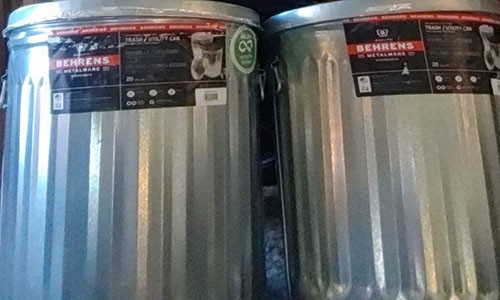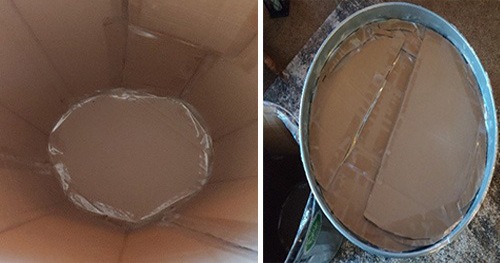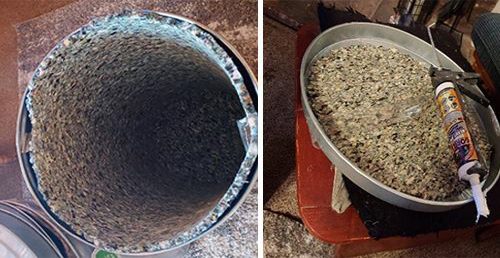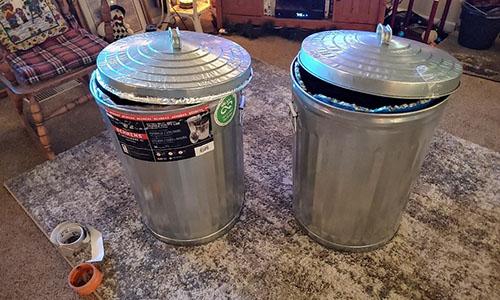Long before the pandemic struck the U.S., I had seen the videos from China, and I knew by late December, early January, it was on our doorstep. Before the ’empty store’ crisis struck, I had already done my shopping (including toilet paper). Then when chaos erupted in the streets, I realized that our crisis was not over.
It became necessary for us to remember that we had fridges, freezers, and generators. Most of the items we rely on may be small, but in an EMP, they may very well be made useless. I’ve done my own research. With a little imagination and a son who likes to help, we built our own faraday cages successfully and affordably.
Related: How to Tell in 5 Minutes If It’s a Power Outage or an EMP
Here is what you need
- 20 Gallon (or larger) Behrens Galvanized Steel Trash Cans with locking lids are recommended, but the ones with locking lids were sold out. I got a standard foil tape lid. Approximate cost of $40 each for a t Amazon, search your local hardware store for brands and costs.


- Aluminum Foil Tape: I bought Scotch Aluminum Tape for app. 6$ at Amazon.
- Extra Cardboard
- Utility knife (or in our case a kitchen knife since we could not find the toolbox)
- Guerrilla Glue and Tape (or strong glue packing tape) if not using a tape-able material.
Another way to insulate your faraday cage, which I like the results much better, was some extra carpet padding I found in the garage. If you use this however, tape is of little use, so any kind of strong glue should be efficient.
To place a barrier between your metal security and your electronic devices, cardboard, carpet padding, and bubble wrap are all good. If your items hit metal or if your barrier has open spaces, the safety of your mobile phones, laptops, computers and any other electrical devices inside will decrease or be removed.
Directions
1. You can use the box that came in (if shipped) with your cans or other stuff. Place your trash can on flat cardboard and cut in a circular fashion around the bottom of the cover. Repeat. You’ve got 2 circular barriers now, one for the bottom and one for the metal can lid. Guerrilla tape or packaging tape may be used to secure the inside together.


Even though my carpet pad barrier at the top looks loose, it helps seal the lid around the top of the lid around the pad. The day you intend to use a foil tap to close around the top of the lids. Both insulators (upon testing) are solid Faraday cages.
Related: Get Safely Home After an EMP




For power sources and generators, I would like to add a tip. But I found that if you put your smaller power sources in their original packaging and put them in a package, put a few layers of aluminum foil taped tightly around the boxes… you’ve just built your own faraday cages for small generators. This saves lots of room for other stuff in your metal cans.
For those generators, do not forget to wrap some solar panels as well.
You may use mobile phones or a radio in order to test your gadgets. Some signals from cells are stronger than others. We tried this with all our phones. We put each of 4 mobile phones inside the faraday cages (both padded cage and cardboard cage) 3 of them went straight to voicemail when called from the outside line. Nor did it ring in the cage at all.
The best way to test it was with a radio powered by a battery. You can clearly hear that the playing of music begins to go static as we put it in the box before the lid is even placed. We realized their signal was absolutely gone with the lid on.
Below is a video I found showing how a garage redneck radio testing and how well these Faraday Cages work:
It was a fun project on a Saturday afternoon and quite successful. With your children and / or family, you might make a day of it. Not only it is fun to do, but with a comfortable feeling that you are well-prepared if SHTF does so.





















